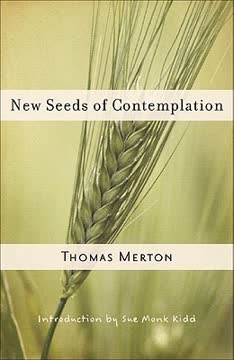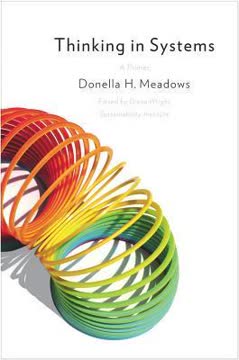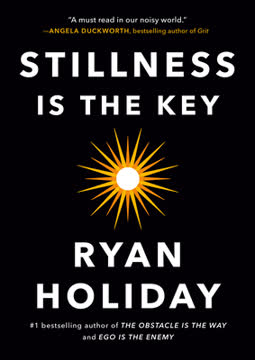Key Takeaways
1. Evil is a Real Force, Not Just an Absence of Good
Evil is a reality with an agency of its own.
Active, not passive. The book challenges the modern tendency to downplay or deny the reality of evil, arguing that it is not merely the absence of good but an active, aggressive force with its own agency. This perspective aligns with ancient wisdom traditions that recognized evil as a tangible presence capable of influencing individuals and communities.
Marks of evil. The book identifies several characteristics of evil, including its deceptive nature, its ability to disguise itself in innocent forms, its contagious influence, and its tendency to erode the foundations of personal and social life. Evil multiplies itself on your energy, your lifeblood, your creativity, and co-opts your good and often magnificent energies and potentials, and makes them serve hatred, sadism, oppression, and the destruction of health and life.
Mythic imagination. The author emphasizes the importance of the mythic imagination in understanding and confronting evil, drawing on folklore, mythology, and even contemporary movies to illustrate its dynamics. By recognizing the patterns and themes associated with evil in these narratives, we can become more vigilant in discerning its presence in our own lives and in the world around us.
2. The Lucifer Complex: Grandiose Energies Within
Traditional mythologies often used the mythic image of the dragon to indicate an intuition of these great and dangerous forces that lurk within the human soul and turn satanic when left unconscious or treated with disrespect.
The Great Self Within. The book introduces the concept of the "Lucifer Complex," which refers to the powerful, grandiose energies that reside within every human being. These energies, when faced consciously and with respect, can be a source of creativity and transformation.
Existential idolatry. However, when the ego engages in a pretentious "unknowing" of the reality and significance of this presence, the result is existential idolatry and malignant narcissism. This denial of the divine presence creates a demonic alchemy that hijacks the sacred energies of the soul and twists them into destructive powers.
Manifestations of evil. These destructive powers manifest as addiction, racism, sexism, homophobia, political oppression, ritual violence, war, and ecological destruction. The book argues that both corporate greed and religious fundamentalism are fueled by these same grandiose energies.
3. Spiritual Warfare: An Archetypal Struggle
Our whole being is nothing but a fight against the dark forces within ourselves.
Inner and outer battles. The book emphasizes the importance of recognizing the archetype of spiritual warfare, which involves a constant struggle against the dark forces within ourselves. This inner battle is essential for personal growth and individuation.
The warrior archetype. The warrior archetype is crucial for mobilizing resources, organizing action, and directing energy toward transpersonal goals. Without a solid connection to the warrior within, individuals may engage in ineffectual, self-defeating behaviors.
Beyond the hero. The book distinguishes between the hero and the warrior, noting that the hero is still on a journey toward maturity, while the warrior has full command of their resources and abilities. The true warrior represents mature ego function.
4. Modern Secularism Can Fuel Pathological Narcissism
Existential denial of the divine presence creates a demonic alchemy that hijacks the sacred energies of the soul and twists them into destructive powers of hideous strength.
Loss of the sacred. The book argues that modern secularism, with its emphasis on autonomy and rejection of traditional religious structures, has led to a loss of conscious ritual contact with the realm of the sacred. This loss has contributed to an increase in pathological narcissism and unregulated grandiosity.
Unconscious sacraments. In the absence of conscious spiritual practices, people may turn to unconscious, destructive behaviors as substitutes for sacred rituals. These behaviors can include addiction, promiscuity, and the exploitation of others.
The need for myth. The book emphasizes the importance of rediscovering the mythic realm to contain and channel grandiose energies. Without a connection to myth, the inner grandiose self can become trapped in the human realm, leading to destructive consequences.
5. Ritualization: Containing the Dragon's Fire
The archetypal configurations that we do not ritualize consciously, we are condemned to act out unconsciously.
Conscious vs. unconscious ritual. The book highlights the importance of conscious ritualization as a means of containing and channeling archetypal energies. Unconscious ritualization, by contrast, can lead to destructive acting out and a lack of awareness of the forces at play.
Tribal rituals. Premodern tribal cultures often used conscious ritualization to limit aggression and conspicuous consumption. Modern culture, however, lacks effective rituals to regulate these impulses.
The need for new rituals. The book calls for the development of new planetary spiritual consciousness and concrete rituals to address the challenges of aggression and consumption in the modern world. These rituals should be led by competent ritual elders who understand the psychological and spiritual dynamics involved.
6. The Personal Shadow vs. The Archetypal Shadow
It involves learning how to tell the difference between the personal shadow that comes from your individual experience, and the archetypal forces which have access to your psyche from within, that you can never integrate, and had better not try to integrate.
Personal shadow. The book distinguishes between the personal shadow, which consists of repressed or denied aspects of the individual's personality, and the archetypal shadow, which represents universal patterns of human destructiveness. The integration of the personal shadow can bring peace and harmony to the psyche.
Archetypal shadow. The archetypal shadow, however, cannot be integrated and must be related to consciously. This involves recognizing the objective psychic reality of evil and developing strategies for confronting its influence.
Evil as possession. The book suggests that evil can be understood as a form of possession, in which archetypal forces invade and colonize the human psyche. This perspective aligns with traditional views of evil as an external agency that can seduce individuals into destructive behavior.
7. The Four Archetypes and Grandiosity
There is no one alive who does not have a grandiose, exhibitionistic self-organization, an actual psychological structure or entity that thinks it is God.
King/Queen: Grandiosity manifests as a need for control and domination, often disguised as a desire to protect or guide others.
- Example: A leader who believes they are the only one capable of making the right decisions.
Warrior: Grandiosity is expressed through workaholism, compulsive rage, and a sense of righteous indignation.
- Example: A person who is constantly fighting against perceived injustices, often to the detriment of their own well-being.
Magician/Magus: Grandiosity takes the form of intellectual arrogance, emotional detachment, and a belief in the superiority of one's own knowledge or understanding.
- Example: An academic who prioritizes theoretical correctness over practical action or human connection.
Lover: Grandiosity is characterized by a focus on personal feelings and needs, a sense of victimization, and a tendency toward addictive or codependent relationships.
- Example: A person who constantly seeks validation and attention from others, often through manipulative or self-destructive behaviors.
8. Transpersonal Assistance: You Are Not Alone
If you are cooperative, the Self with a capital “S” will see to it that you have helpers in your darkest hour.
The Self as helper. The book emphasizes the importance of recognizing the existence of transpersonal forces that can provide assistance in times of struggle. This aligns with Jung's concept of the Self, which represents the totality of the psyche and can offer guidance and support to the ego.
Providence and synchronicity. The book connects the Jungian concept of synchronicity with the Reformed Christian tradition of Providence, suggesting that there is a divine plan at work in the universe that will not leave anyone without reinforcements.
The Holy Spirit. The Holy Spirit is a transpersonal Helper available to you. It does not mean you can avoid what you have to do, but you are not in it alone. That is part of the genius of Jung, and one of the things that makes Jungian psychology such a powerful alternative to all other psychologies, for none of them work from the assumption that the ego has help from within the psyche.
9. The Importance of Discernment and Humility
The very minute she gets involved in relationships that are more hopeful, this thing mobilizes, gets aggressive, and seeks to destroy the new relationship.
Humility as a virtue. The book emphasizes the importance of humility as a means of regulating grandiose energies. True humility consists of knowing one's limitations and seeking help when needed.
Differentiating personal and archetypal. It is crucial to distinguish between the personal shadow, which can be integrated, and the archetypal forces, which cannot. Attempting to integrate the archetypal shadow can lead to psychological fragmentation.
The need for spiritual practice. The book argues that a spiritual practice is essential for dealing with archetypal energies and preventing them from overwhelming the ego. Without a spiritual practice, individuals may be more vulnerable to possession by grandiose forces.
10. Malignant Tribalism: The Social Expression of Unchecked Grandiosity
Social displacement of grandiosity still leaves the grandiose energies intact and fundamentally unchallenged.
Tribalism as a defense. The book argues that tribalism, with its emphasis on group identity and exclusion of outsiders, is often a defense against individual fragmentation. By projecting grandiose energies onto the group, individuals can avoid facing their own limitations.
The dangers of tribalism. However, this social displacement of grandiosity can lead to malignant tribalism, in which groups demonize and attack those who are not part of their tribe. This has been the engine behind all genocides, racism, classism, sexism, and religious warfare.
The need for a global consciousness. The book calls for the development of a new planetary spiritual consciousness that transcends tribalism and recognizes the inherent worth and dignity of all human beings. This requires a conscious effort to challenge and transform the unconscious forces that fuel hatred and violence.
Last updated:
FAQ
1. What is Facing the Dragon: Confronting Personal and Spiritual Grandiosity by Robert L. Moore about?
- Exploration of grandiosity: The book investigates the psychological and spiritual dynamics of grandiosity and evil within the human psyche, symbolized by the archetype of the dragon.
- Archetypal and interdisciplinary approach: Moore combines Jungian psychoanalysis, spiritual theology, and comparative mythology to decode how unconscious grandiose energies shape personal and collective behavior.
- Contemporary relevance: It addresses urgent issues like narcissism, tribalism, religious conflict, and ecological destruction, arguing these are fueled by unregulated archetypal energies.
- Call to conscious engagement: The central message is the necessity of consciously facing and integrating these powerful inner forces to prevent destructive outcomes and foster transformation.
2. Why should I read Facing the Dragon by Robert L. Moore?
- Timely psychological insights: The book offers a framework for understanding the unconscious forces behind violence, addiction, and social conflict in today’s world.
- Bridges psychology and spirituality: Moore uniquely integrates psychoanalytic science with spiritual wisdom, making the book valuable for both therapists and spiritual seekers.
- Practical tools for growth: It provides actionable guidance, such as ritualization and community engagement, to help readers regulate grandiosity and foster authentic maturity.
- Relevance for personal and social healing: The book is especially useful for those interested in personal development, leadership, or addressing collective crises.
3. What are the key takeaways from Facing the Dragon by Robert L. Moore?
- Grandiosity is universal: Unconscious grandiose energies are present in everyone and can be both creative and destructive.
- Archetypal structures matter: The king/queen, warrior, magician, and lover archetypes shape how grandiosity manifests in individuals and cultures.
- Conscious engagement is essential: Facing and befriending the “dragon” within is necessary for personal integration and social harmony.
- Ritual and community are vital: Healthy ritualization and supportive communities are crucial for containing and transforming grandiosity.
4. What is the "dragon" archetype in Facing the Dragon and why is it important?
- Symbol of grandiosity: The dragon represents the powerful, often unconscious grandiose energies within the psyche that can be creative or destructive.
- Dual nature: Mythologies depict the dragon as both a threat and a source of power, reflecting the ambivalence of these inner forces.
- Necessity of conscious engagement: Moore argues that the dragon cannot be destroyed but must be consciously faced, respected, and integrated to prevent chaos.
- Path to individuation: Befriending the dragon is a metaphor for the individuation process, leading to greater maturity and effectiveness.
5. How does Robert L. Moore define and explain human evil in Facing the Dragon?
- Evil as active force: Evil is described as a real, active presence capable of deception, seduction, and destruction, not just the absence of good.
- Possession and enchantment: Moore likens evil to a possession state or alien force that invades the psyche and community, undermining life and relationships.
- Rooted in grandiosity: Evil operates through grandiose energies that, when denied or unregulated, become malignant and destructive.
- Mythic and psychological roots: The book draws on folklore, mythology, and psychoanalysis to show how evil is intertwined with archetypal dynamics.
6. What are the four archetypal forms of grandiosity described in Facing the Dragon by Robert L. Moore?
- Royal archetype: Expresses grandiosity through control, hierarchy, and the need for idealizing projections, often leading to domination or paranoia.
- Warrior archetype: Manifests as workaholism, righteous rage, and aggression justified by a sense of moral superiority.
- Magician archetype: Shows grandiosity as emotional detachment and intellectual superiority, denying evil and avoiding compassionate action.
- Lover archetype: Centers on feelings, victimization, and bodily needs, leading to addictive behaviors, toxic shame, and dependency.
7. How does Facing the Dragon by Robert L. Moore explain the relationship between grandiosity and pathological tribalism?
- Projection onto groups: Individuals displace their unconscious grandiosity onto social groups, creating selfobject relationships that foster exclusivity.
- Malignant tribalism: This dynamic leads to demonization of outsiders, racism, religious fundamentalism, and even genocidal impulses.
- Cycle of violence: Unregulated grandiosity in groups perpetuates cycles of hatred and violence.
- Need for conscious regulation: Moore argues that insight and conscious engagement can transform these energies into cooperative, compassionate community life.
8. What is the "Diamond Body" model in Facing the Dragon and how does it help decode archetypal structures in the psyche?
- Framework for analysis: The Diamond Body is Moore’s model mapping four major archetypal configurations—king, warrior, magician, and lover—within a quaternary structure.
- Beyond stereotypes: It expands Jung’s ideas by recognizing both aggressive and receptive qualities in masculine and feminine archetypes.
- Dynamic interplay: The model helps analyze how grandiose energies manifest differently depending on which archetype dominates.
- Tool for integration: It provides a comprehensive tool for psychological and spiritual work, aiding in the conscious regulation of grandiosity.
9. What practical methods and advice does Facing the Dragon by Robert L. Moore offer for regulating grandiose energies?
- Active imagination: Moore recommends inner dialogue with archetypal figures as a way to become conscious of and regulate grandiosity.
- Ritual and exercise: Regular ritualization, including physical exercise and participation in worship or liturgy, helps channel grandiosity healthily.
- Community support: Engagement in religious communities or twelve-step programs provides social containment and accountability.
- Spiritual practice as survival: Prayer and spiritual disciplines are presented as essential techniques to manage overstimulation from archetypal energies.
10. How does Facing the Dragon by Robert L. Moore address spiritual narcissism and religious conflict?
- Spiritual grandiosity: The book highlights how spiritual groups often claim exclusive divine approval, leading to idolatry and conflict.
- Need for humility: Moore advocates for traditions to recognize their own unconscious grandiosity and set aside exclusivist claims.
- Cooperation over competition: He urges spiritual communities to engage in compassionate, cooperative action for the common good.
- Discernment is key: Leaders and individuals must develop discernment to differentiate authentic spirituality from ego-driven posturing.
11. What are the "dragon laws" in Facing the Dragon by Robert L. Moore and why are they significant?
- Inexorable psychic laws: The dragon laws summarize how unconscious grandiosity operates relentlessly, causing cycles of inflation and demonization.
- Four archetypal manifestations: They detail how grandiosity appears in royal, warrior, magician, and lover forms, each with characteristic psychological signs.
- Path to transformation: Awareness and respectful confrontation of these laws enable individuals to reduce anxiety and cultivate love, hope, peace, and joy.
- Personal and social healing: Understanding these laws is crucial for breaking cycles of violence and fostering healing.
12. What are the best quotes from Facing the Dragon by Robert L. Moore and what do they mean?
- On human evil: “Existential denial of the divine presence creates a demonic alchemy that hijacks the sacred energies of the soul and twists them into destructive powers of hideous strength.” This highlights how denying spirituality corrupts inner energies into evil.
- On spiritual warfare: “You do not want to struggle? Then do not start toward individuation, because it will be all you can deal with and more to work toward your individuation.” This underscores the necessity of inner struggle for growth.
- On grandiosity: “The human ego cannot contain God.” This statement captures the challenge of managing the archetypal Self’s grandiose energies without fragmentation or psychosis.
- On befriending the dragon: The book emphasizes that the dragon must be consciously faced and befriended, not destroyed, to realize one’s optimal potential.
Review Summary
Facing the Dragon receives high praise for its insights on grandiosity and human psychology. Readers appreciate Moore's exploration of the "dragon" archetype, representing inner grandiosity that can be destructive if unchecked. The book discusses how to integrate this energy positively, drawing on Jungian concepts. Some reviewers found the lecture-based format repetitive, but most valued the wisdom shared. The work is seen as crucial for understanding personal and societal issues, with many considering it a life-changing read despite its occasionally dense or outdated content.
Similar Books








Download PDF
Download EPUB
.epub digital book format is ideal for reading ebooks on phones, tablets, and e-readers.





